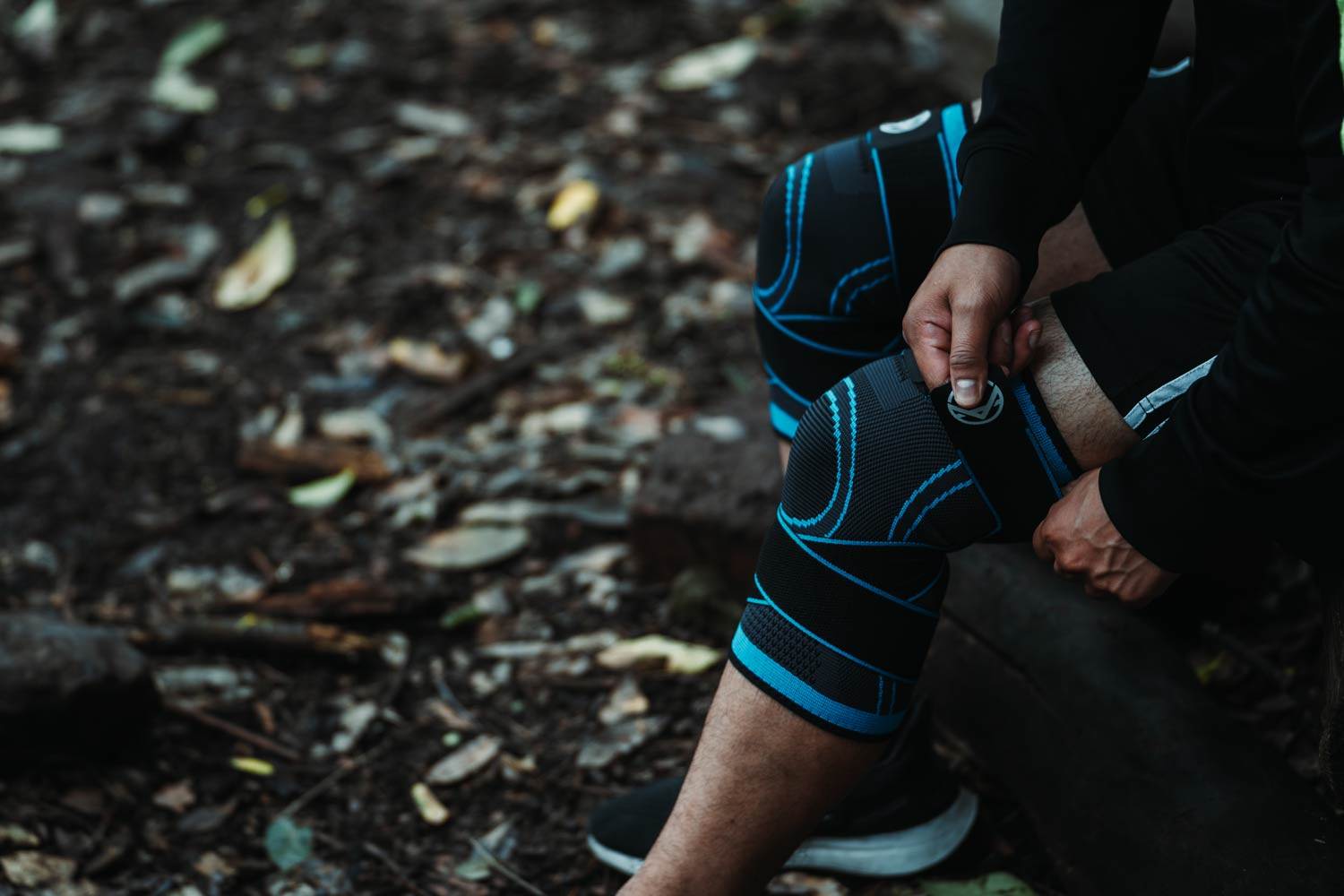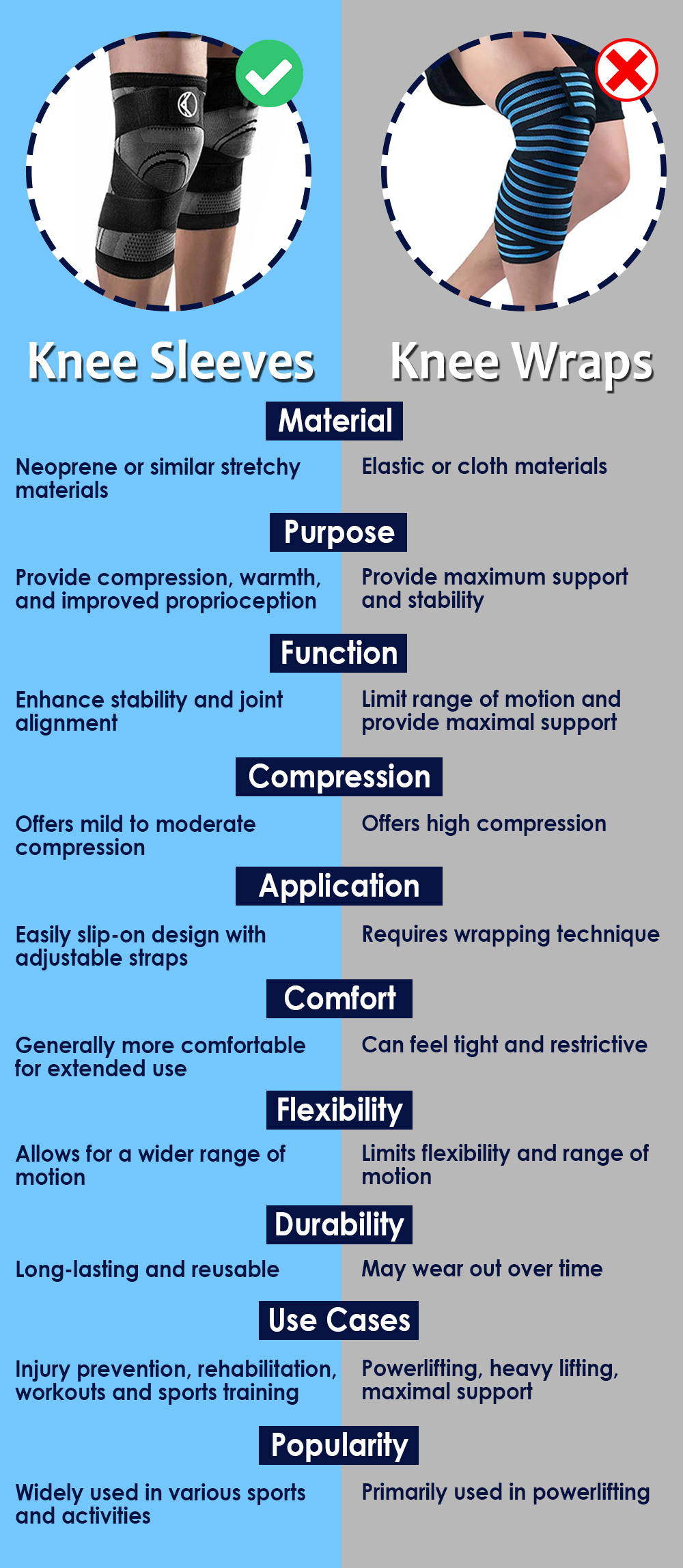If you're an athlete or weightlifter, you know how important it is to protect your knees during intense workouts. Knee wraps and knee sleeves are two of the most popular knee accessories that can help you prevent injury and improve your performance.
In this article, we will discuss the differences between knee wraps vs sleeves, their advantages, drawbacks, and benefits, and who should use them.
Knee wraps are typically made of elastic material that is similar to what is found in wrist wraps. This helps ensure your knees remain stable throughout your workout, avoiding injury from improper form or too-heavy weights. They are usually made of a combination of cotton, elastic, and polyester materials.
The primary purpose of wearing knee wraps is to increase knee stability and prevent injuries by limiting the range of motion. Knee wrapping also improves your lifting performance by providing a rebound effect that allows you to lift more weight.
Knee wraps work by providing externally applied pressure on the knee joint and its surrounding soft tissues. This helps to improve blood flow and reduce injury risk. To use them, wrap them around your knees in a spiral pattern from the bottom of your thigh to the top of your calf. Make sure that you are not wrapping too tightly as this can restrict your range of motion.

Knee sleeves are form-fitting compression garments made of neoprene or other elastic material.
Unlike knee wraps, they provide support by limiting patella movement and increasing synovial fluid, which helps to keep the joints warm and lubricated. Knee sleeves also provide muscular support, helping to reduce knee fatigue during training sessions.
Knee sleeves typically come in two different thicknesses: 5mm and 7mm. The thicker the sleeve, the more support, and warmth it provides to protect your knee from injury.
Wear knee sleeves if you are an athletes and fitness enthusiast who want extra support during running, jumping, or other activities requiring more knee flexibility.
Athletes wearing knee sleeves can benefit from enhanced warmth, compression, and protection for their knees during a training session. They are also suitable for those suffering from chronic knee pain due to arthritis, a runner's knee, tendonitis, or any other condition.

Now that we have defined what each type of product is, let's look at the differences between knee sleeves vs knee wraps:
Knee sleeves are designed for light support and are snug but still allow for comfortable movement – you can still bend your knee freely. On the other hand, knee wraps are designed to be much tighter and provide more support, especially during heavy lifts where you need extra stability.
Knee sleeves and wraps both provide pain relief by compressing the joint, reducing swelling, and improving blood flow for faster recovery. Knee wraps also produce elastic energy, which helps with heavy lifts like squats or deadlifts. This rebound effect is not present in knee sleeves because they are made of a much less stiff material.
Knee sleeves and wraps can both be used to help prevent common knee-related injuries such as runner's knees and tendonitis.
Knee wraps are usually used by athletes or weightlifters who need extra support for heavy lifts, whereas knee sleeves are more suitable for those suffering from chronic pain or stiffness in the joint. Wraps can also be helpful in preventing ACL tears due to their elastic energy rebound effect when they’re worn during lower body exercises.
Knee sleeves and wraps can both be used to help improve performance. The snug fit of knee sleeves helps reduce friction and fatigue, allowing for more efficient movements.
Knee wraps provide extra stability, which is particularly beneficial during heavy lifts as it helps prevent excessive rotation at the knee joint and can even add a bit of an explosive “snap” effect due to their elastic energy.
The answer depends on your individual needs. If you are looking for extra stabilization and support during heavy lifts, knee wraps are the way to go. However, if you are just looking for some light support, pain relief, and improved performance, then a knee sleeve would be a better choice.
No matter which option you choose, both knee sleeves and wraps can be great tools for improving your performance and helping to prevent injury.
Be sure to keep in mind the type of material, sizing options, and tightness levels when making your decision so that you get the best possible product for your needs.